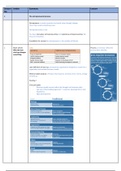Summary
(2019/2020) Complete Article and Lecture summary of Theories of Entrepreneurship and Innovation
- Course
- Institution
(2019/2020) Complete Article and Lecture summary of Theories of Entrepreneurship and Innovation This summary is complete and make sit super easy to study the material. All the important subjects are discussed. The easy-to-read overview will make it easier to not only understand the material bu...
[Show more]



